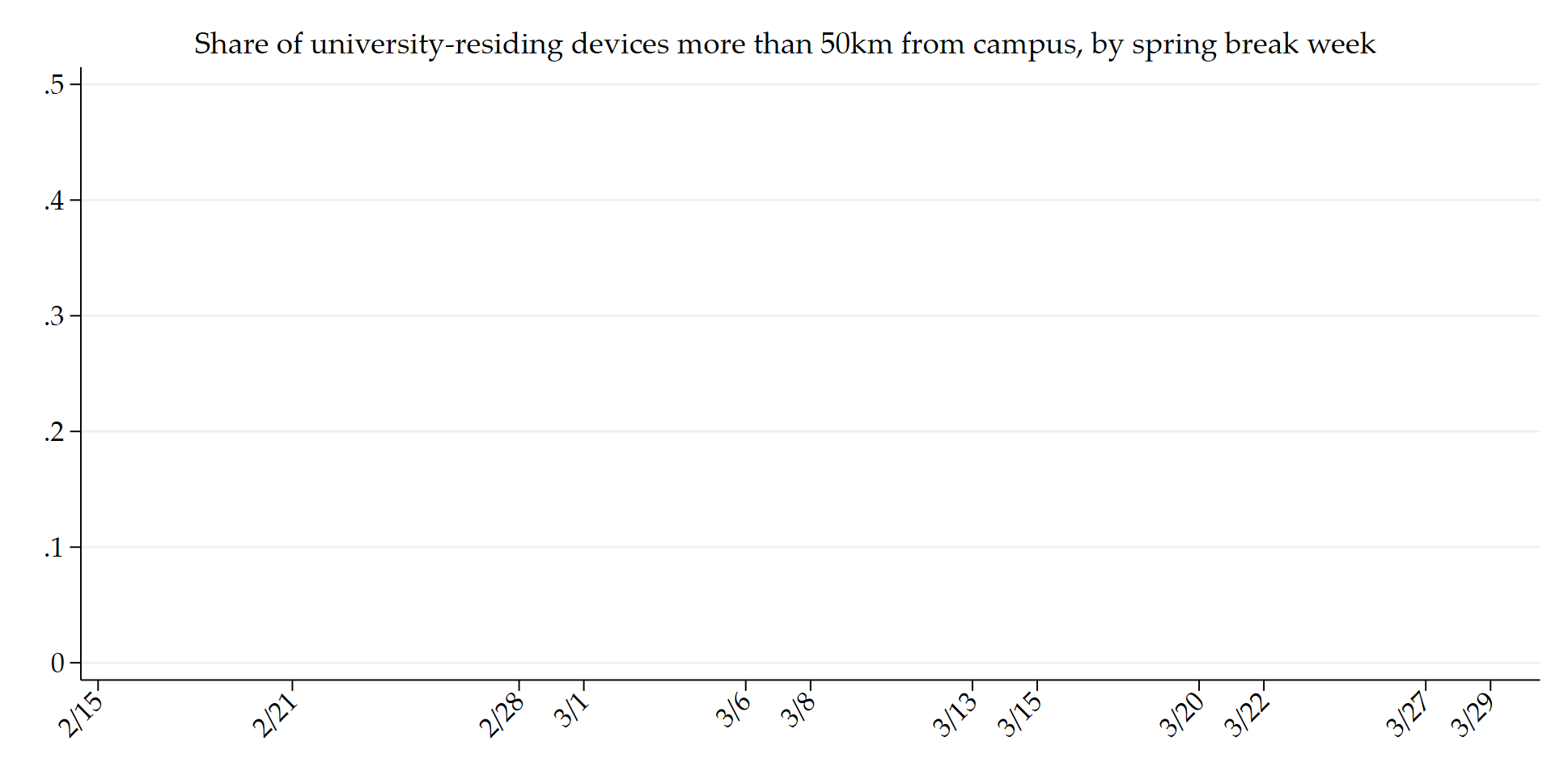Hi all! @Paul_Niekamp and I have a new paper using SafeGraph data. We investigate whether travel over spring break by university students contributed to local COVID-19 spread. Due to the rapid growth of COVID-19 and the subsequent suspending of in-person classes, students with earlier spring breaks traveled normally but students with later spring breaks effectively had their spring break canceled and didn’t return to campus. We show with SafeGraph data that devices residing on early spring break campuses traveled extensively and returned to campus after break but later spring break devices left campus and did not return. When we split counties into more/less early spring break students, we see a noticeable difference in the growth rate of confirmed COVID-19 cases and mortality. First, in the week after students returned (primary infections) and then two weeks after students return (secondary spread). For mortality, we don’t see any noticeable difference until around 3 weeks after students return, but then mortality growth rates remain higher for the next month in early spring break counties than in late spring break counties. We also find that the effect of university student travel was over 50% larger for students who traveled via air, to New York City, or to Florida while cruise travel was no riskier than that of the average student traveler.
You can find the paper here: https://papers.ssrn.com/sol3/papers.cfm?abstract_id=3606811
Tweet summary with more graphics: https://twitter.com/danielmangrum/status/1263513039397101568?s=20
